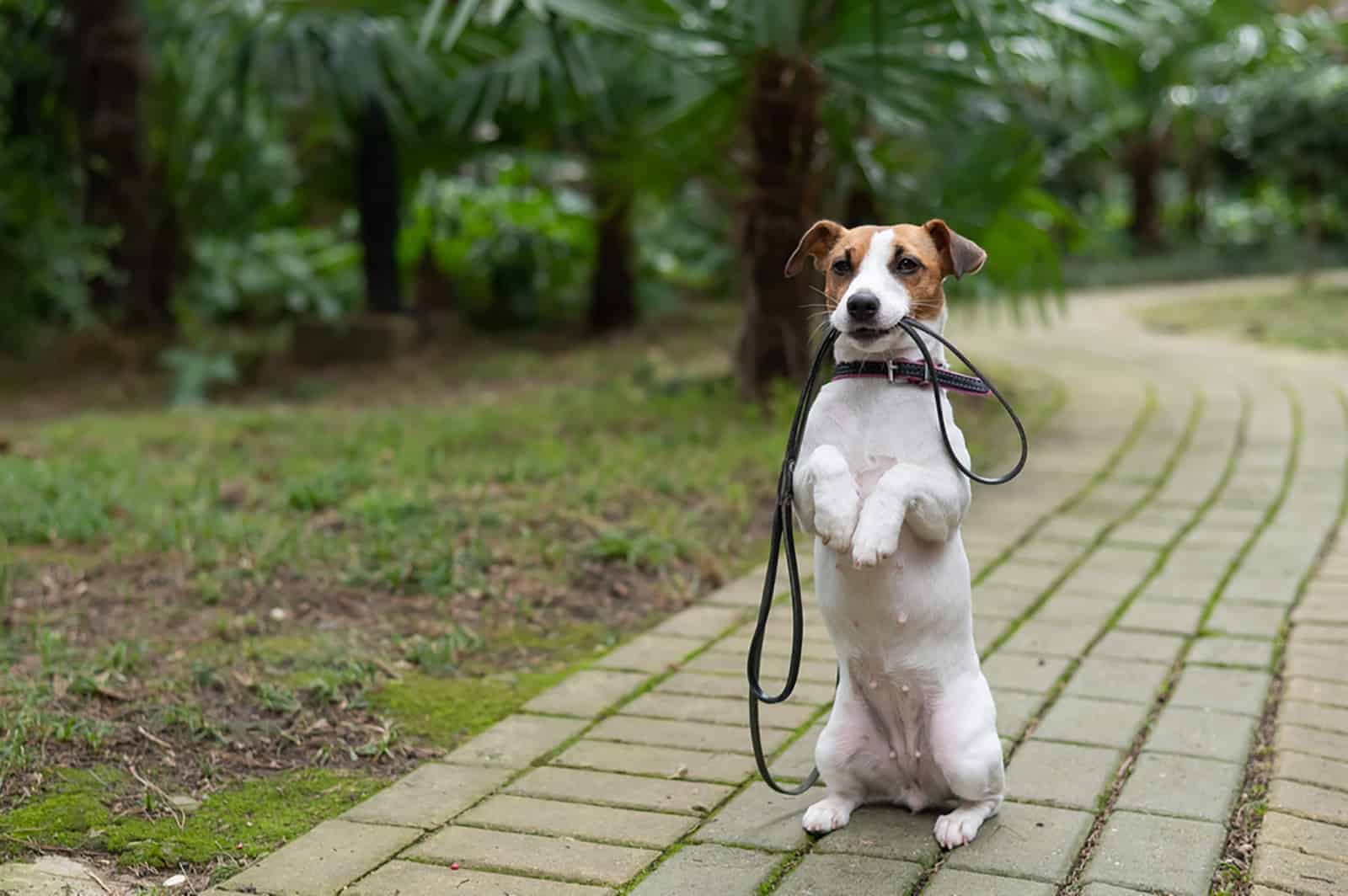Have you ever wondered what it would look like to have a small breed puppy that happens to have high levels of energy? Don’t bother wondering anymore, because the Jack Russell Terrier (JRT) is the one!
This cute, agile dude doesn’t exceed 15 inches in height, but still resembles a fearless, vocal knight whose personality is just tireless!
The Jack Russell growth chart is a special unit, considering the uniqueness of the puppy and the unusual combination of its physical and behavioral characteristics.
The puppy itself is playful, active, agile and tireless. The breed originally appeared as a fox hunter in England in the 1800s but, over time, the breeders worked on the puppy’s social skills.
Nowadays, the Jack Russell Terrier is famous as a family dog that happily lives both indoors and outdoors.
For those who are inclined to buy one of these short-haired, broken-coated canines, we prepared a close look at the breed’s growth chart. Let’s take a look!
The Jack Russell Growth Chart
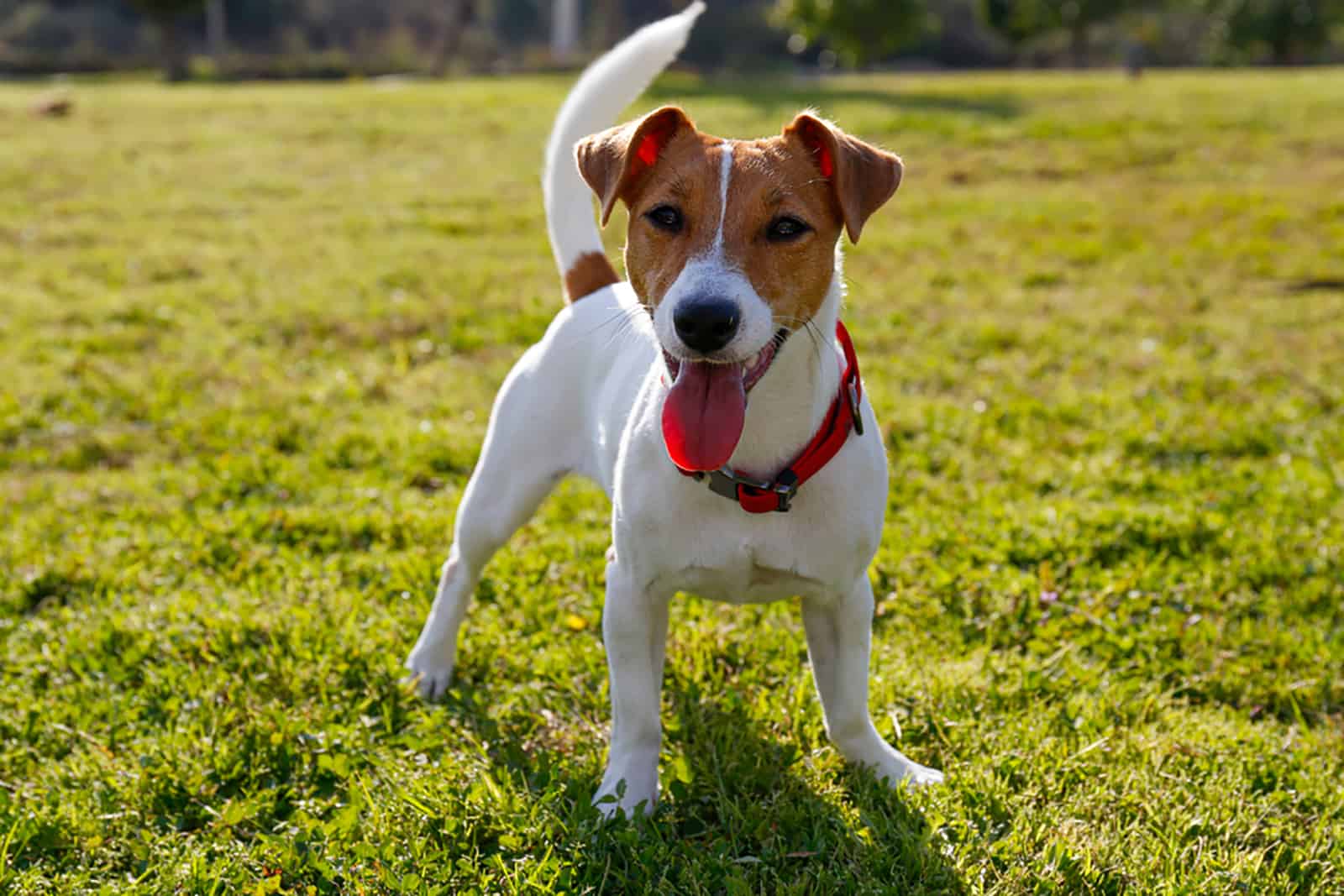
Numerous people mix the Jack Russell Terrier puppy with the Parson Russell Terrier. While it may seem that these two are actually the same breed, research shows differently.
Breeders concur that the JRT is slightly smaller in comparison to the PRT. The latter has a wider chest and square body, and is mostly used as a show dog.
On the other hand, Jack Russell terriers are bred for a family life and appear shallow in the chest.
The JRT puppy is still unrecognized by the American Kennel Club, whilst the Parson Russell Terrier qualifies as the 145th breed on the list.
In case you’re wondering, are Jack Russell Terriers hypoallergenic? The answer is – No! Despite the fact that the breed has the well-known, short-haired coat and it is a moderate shedder, their coat is, however, not hypoallergenic.
The average weight of the breed is somewhere between 15-17 pounds. In terms of height, the JRT is 10-14 inches tall.
The Jack Russell Weight Chart By Age
Age Estimated Weight
[table id=605 /]
The Jack Russell Height Chart By Age
[table id=606 /]
Jack Russell Growth Stages Explained
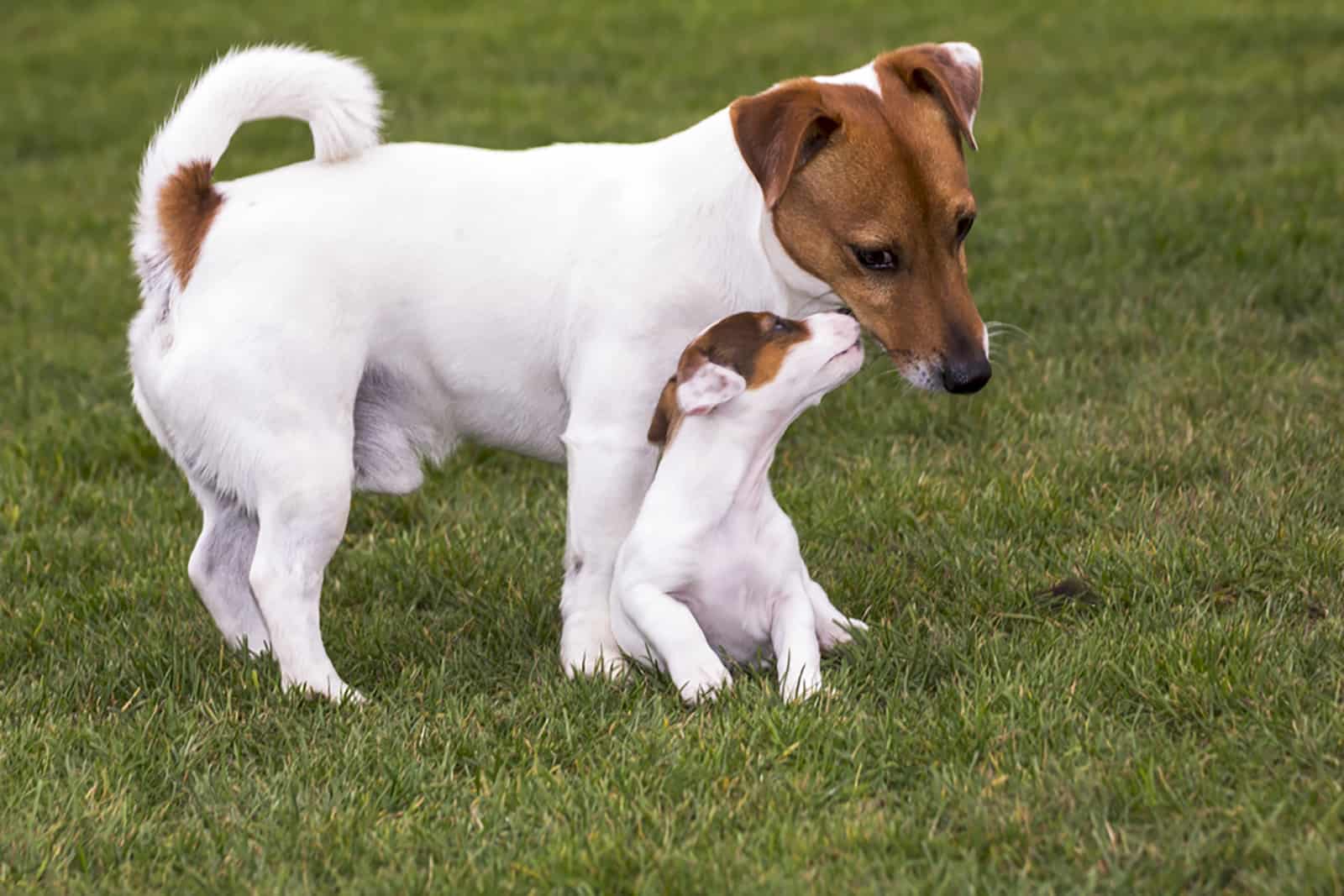
As we can see from the previous chart, these puppies develop moderately and the overall Jack Russell growth chart does not have many variations after they turn 10 months.
This is a relatively small dog, resembling the size of a Beagle or Pug, although the breed is slightly bigger compared to toy breeds, such as Pomeranians, Chihuahuas, and Yorkshire terriers.
In height, they are among the small to medium breeds, alongside the Corgi, Cocker Spaniel, Dachshunds, and French Bulldog breeds.
However, the Jack Russell Terrier differentiates in one important thing – they are significantly smaller in weight than these four.
Despite the fact that JRT puppies do not qualify among the healthiest dog breeds in the world, their 13-16 years of average lifespan shows that the puppy is quite healthy and does not have major health issues.
The puppy has moderate and proportional growth phases. They are conditioned with good health, proper feeding charts, and genetics.
Birth – 3 Weeks
The first growth phase of the Jack Russell growth chart is known as puppyhood. In this phase of life, puppy growth is slow and subject to supervision.
Their weight should be measured daily. That way you will be able to determine whether the puppy develops appropriately and whether it needs any additional stimulation in terms of food supplies.
Sometimes, breast milk doesn’t suffice as the puppies are too weak to stimulate the milk flow with their mouth.
The other reason can be found in the fact that, in a big litter, the stronger puppies will have a tendency to develop faster, as they are dominant in the crowd and naturally suck more milk.
This is the phase where the Jack Russell’s lifespan starts taking shape. They are slowly beginning to open their eyes, crawl, and make their first sounds.
3 Weeks – 12 Weeks
The second phase of the Jack Russell growth chart is known as the socialization phase. This is an extremely active dog that can sometimes show aggression, or be self-destructive.
They are easily bored and need creative training ideas. Despite the fact that this is a small breed, their activity level should be stimulated, just like in big breeds, such as German Shepherds, Pit Bulls, or even Border Collies.
They don’t have natural, easy-going social skills, like Poodles, or Golden Retrievers, or Bernese Mountain Dogs. The puppy needs early neurological stimulation and dedicated socialization training.
This is the perfect phase to do so, as socialization requires more time and patience in latter stages.
Some Jack Russell mixes, such as French Bull Jacks, or Jack-A-Poos, are naturally more easy-going in temperament, as these mixed breeds inherited the gentle nature of certain of the puppy’s parents.
This terrier breed is pretty stubborn by nature and can sometimes show disobedience. Puppies in this phase are trained throughout the process with positive reinforcement – treats are the perfect way to do this.
A timely trained Jack Russell terrier will be a great human companion, potty trained, and open to all people coming to your home!
3 Months – 6 Months
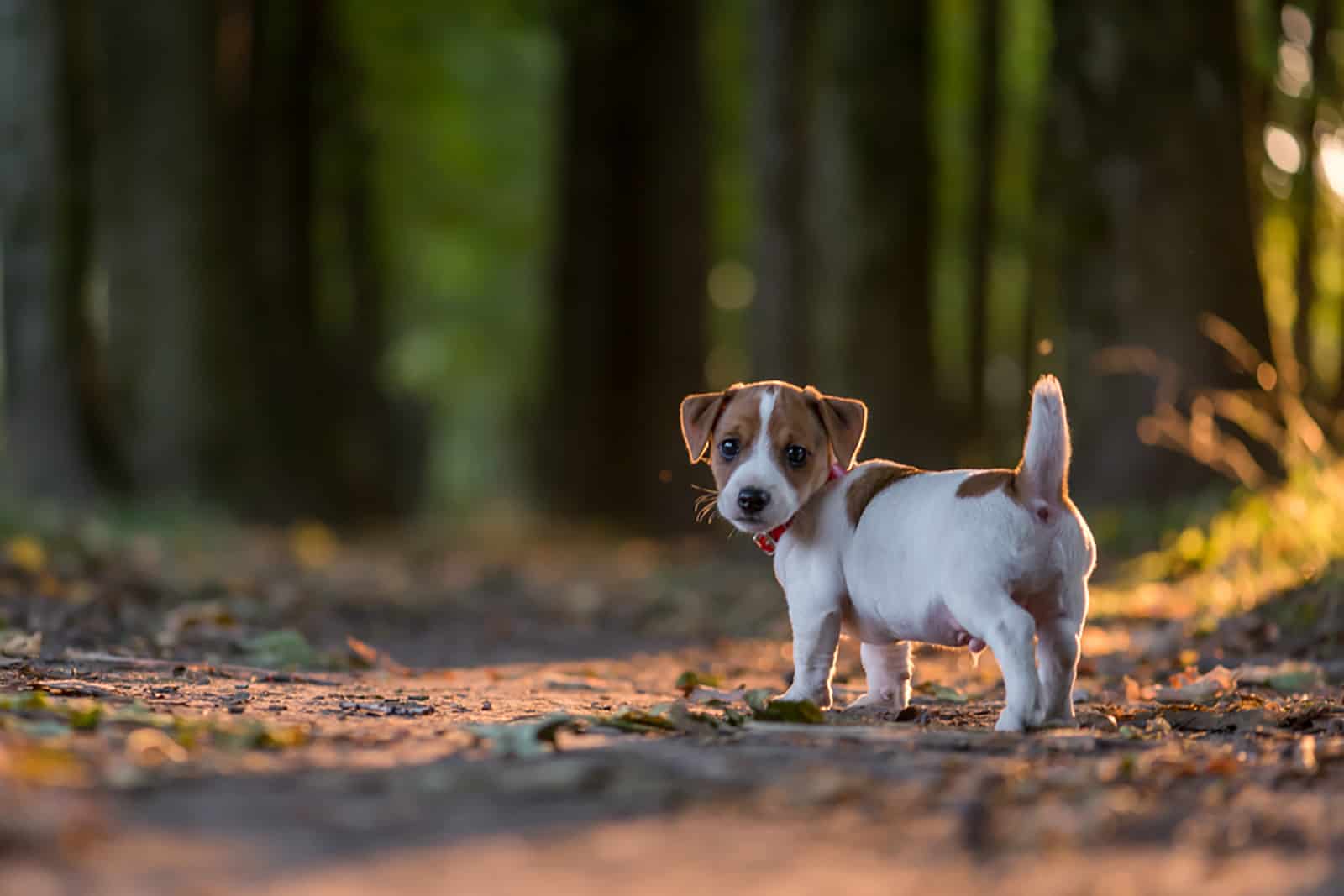
Three to six months of age is the juvenile phase of the Jack Russell growth chart. In this phase puppies regularly eat dog food, socialize with humans and other pets, and require daily exercise.
A recommendation to a future owner is to stay away from the worst dog food brands, as the puppy needs healthy and well-prepared food in order to remain healthy. This includes protein, healthy fats and carbs, as well as required green vegetables.
Minor health problems can be caused by an inadequate feeding chart. For instance, some puppies develop a malfunction of hip joints, and being overweight worsens the condition.
Jack Russell Terriers are healthy dogs by default. In order to remain healthy, both physically and mentally, they need 1-2 hours of exercise a day.
Moderate walks, or simple play in the backyard, such as hide and seek, flyball, or fetch will do just fine.
This is an excellent way to teach your puppy discipline, obedience, and socialization. After the game, a puppy at this age should be rewarded with a good meal, or a simple treat. This is a great way for dog owners to reinforce good behavior.
Jack Russell puppies are quite intelligent, and you should use this fact at this stage of life. They can be excellent working dogs, too.
6 Months – 16 Months
At this phase of life, Jack Russell puppies reach their sexual maturity. If you’re not planning any future litters, the best time to spay, or neuter your puppy is before they reach this phase. However, you should consult your vet about the details.
This is usually the phase in which the puppies calm down and follow a regular doggie path, without significant deviations. Of course, there are several determinants of a puppy’s activity level, such as gender, or a training routine.
JRT puppies usually reach their maximum in terms of weight and height in this phase of life. That’s why you should be extremely cautious when it comes to feeding.
JRT puppies cannot stand obesity, as it impacts their physique negatively and makes them look unproportional.
Obesity can also lead to mental dissatisfaction and cause self-destruction.
Puppies a year to 16 months old are fully developed, and ready to engage in various outdoor activities. If you can’t make up your mind about when the puppy reaches adulthood exactly, be at ease.
The puppy will perfectly embrace the adult lifestyle by the end of this phase.
Nevertheless, Jack Russell Terriers are not Labrador Retrievers, nor are they like any of the large dog breeds. Their adulthood is not characterized by a simple, laidback lifestyle. They demand activities, creativity, and the breed is task-oriented.
Adulthood
In adulthood, JRT puppies will have a fully developed body, clear, smooth, or broken-coat. The dog will become determinant, fearless, and loud as the breed is known for its high-leveled barking.
The adult Jack Russell is known both as a hunting and a working dog, as this is the puppy’s natural design.
They use the firm barking to flush out smaller predators, like foxes, but they are not eager to attack and pick a fight, like Boxers, or Great Danes, who are also known to be hunting dogs.
The latter also qualifies among the aggressive dog breeds, which is not the case with the JRT puppy.
The breed shows a strong desire to work, and can be of great use in households. However, bear in mind that this is not a large breed, such as a Siberian Husky.
The adulthood phase is the final phase of the Jack Russell growth chart, but it does not mean that the dog instantly becomes low-maintenance.
The dog weight should be monitored during this stage of life as the puppy is subjected to potential health conditions, such as diabetes.
Neutered puppies will remain active and playful. Incorporated social skills will make an adult JRT puppy the true entertainer of families. They will still have the need to be the center of attention, but the dog won’t manifest any unpredictable behavior.
JRT’s Healthy Growth – Main Factors
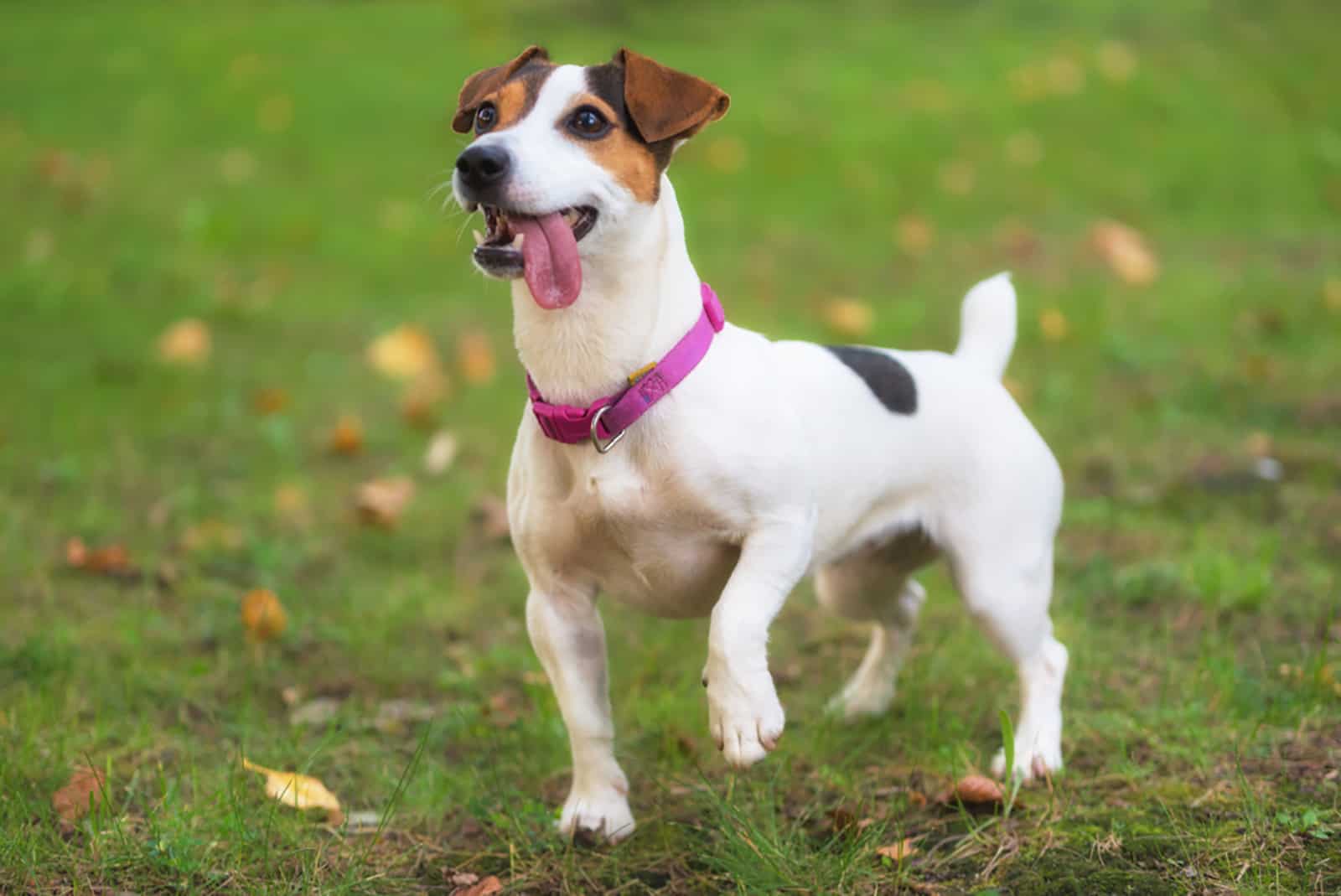
In order to maintain healthy growth within the Jack Russell growth chart, there are several factors you should be aware of. The most important are: diet, training routine, regular vet examinations, timely vaccine, and socialization process.
These five can impact the overall growth of your puppy, so beware!
Refusing to walk, eat, or socialize can be indicators that something’s going on. The important thing is to act in a timely manner and detect the possible risks of your puppy’s growth.
Diet
Puppy weight can vary due to inappropriate dieting. The advice is to establish a proper feeding chart and start from zero. Each phase of the Jack Russell growth chart has its own required foods, and you should stick to it!
Try to avoid unreliable food brands you can purchase from Amazon, or other social platforms. Unprocessed carbs and leftovers are to be avoided too! Diabetes in dogs isn’t a rare health condition. Conversely, it can be fatal if not controlled.
A proper diet will turn your Jack Russell Terrier into a healthy and strong adult dog. Dog measurement isn’t the worst option, especially in the puppyhood phase.
That way you will know exactly how big your puppy is and the puppy’s development builds regularly.
You can find more information on this dog’s diet in our Jack Russell feeding chart.
Training
Training is another crucial factor in your JRT puppy’s growth chart. This is an active breed that doesn’t stand a static way of life. They prefer being walked, or work stimulated. The breed itself is a hunting dog, like the majority of terrier dogs.
Untrained dogs can become destructive. It is much harder to socialize an aggressive dog, than to train socialization from an early age. Mentally healthy puppies will have a nice, standardized routine.
Their feeding won’t be a problem as the puppy will eat more frequent and medium meals.
The muscularity in healthy adult Jack Russell puppies will be satisfactory as it is shaped by running, jumping, and actively playing.
Vet Exams
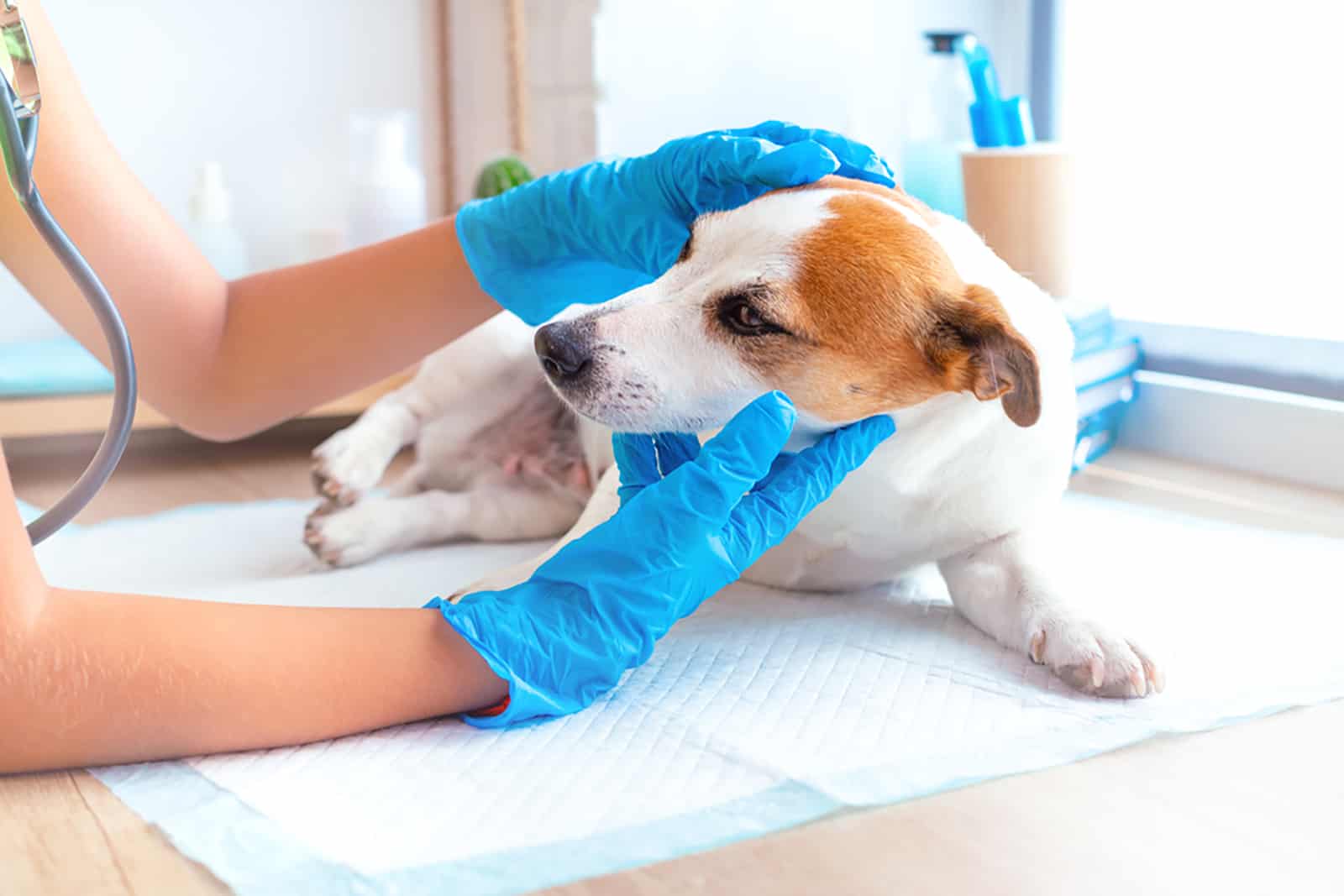
Regular vet exams are crucial in detecting potential health problems in a timely manner. JRT puppies have a tendency to develop several minor conditions, among which hip and elbow dysplasia represent a potential danger in their growth chart.
What do I mean by that?
Simply, puppies with hereditary elbow and hip dysplasia can be inactive, as they are unable to perform regular activities, like other healthy puppies. Their mood is down and their ability to run, jump, or even walk is affected.
These puppies won’t have a regular growth flow and might be in danger in the long run. So, do not overlook vet appointments on a regular basis.
Vaccinations
Vaccination is crucial for the Jack Russell growth chart. It is crucial for any dog breed, though. Unvaccinated dogs are subject to potential diseases that can endanger their overall lifespan.
Many puppies do not have immunity to defend against the plethora of viruses circling in the air.
For instance, vaccines for dogs against adenovirus, coronavirus, canine influenza, and many others will help your puppy develop a strong immunity and live a healthy life.
Puppies that get their regular shots have a tendency to live longer and without major health issues in the future. So, think about it! If you’re a true dog lover, vaccines are a must.
Socialization
JRT puppies socialized from an early age usually live a healthier and happier life than other dogs. This is due to their stabilized routine and positive reinforcement their owners use to reward them for good behavior.
The socialization process helps your puppy adapt to a daily routine better. Puppies develop a strong bond with owners and their overall behavior highly depends on the relationship you build with them.
Unhappy puppies will show anxiety that can manifest in many ways. For instance, irregular eating, weight loss, dog pooping in the house, or many other issues are a sign that something bad is affecting your puppy’s behavior.
On the contrary, socialized and obedience trained puppies don’t manifest fluctuations in their behavior and their overall well-being is good.
What Weight Should A Jack Russell Be?
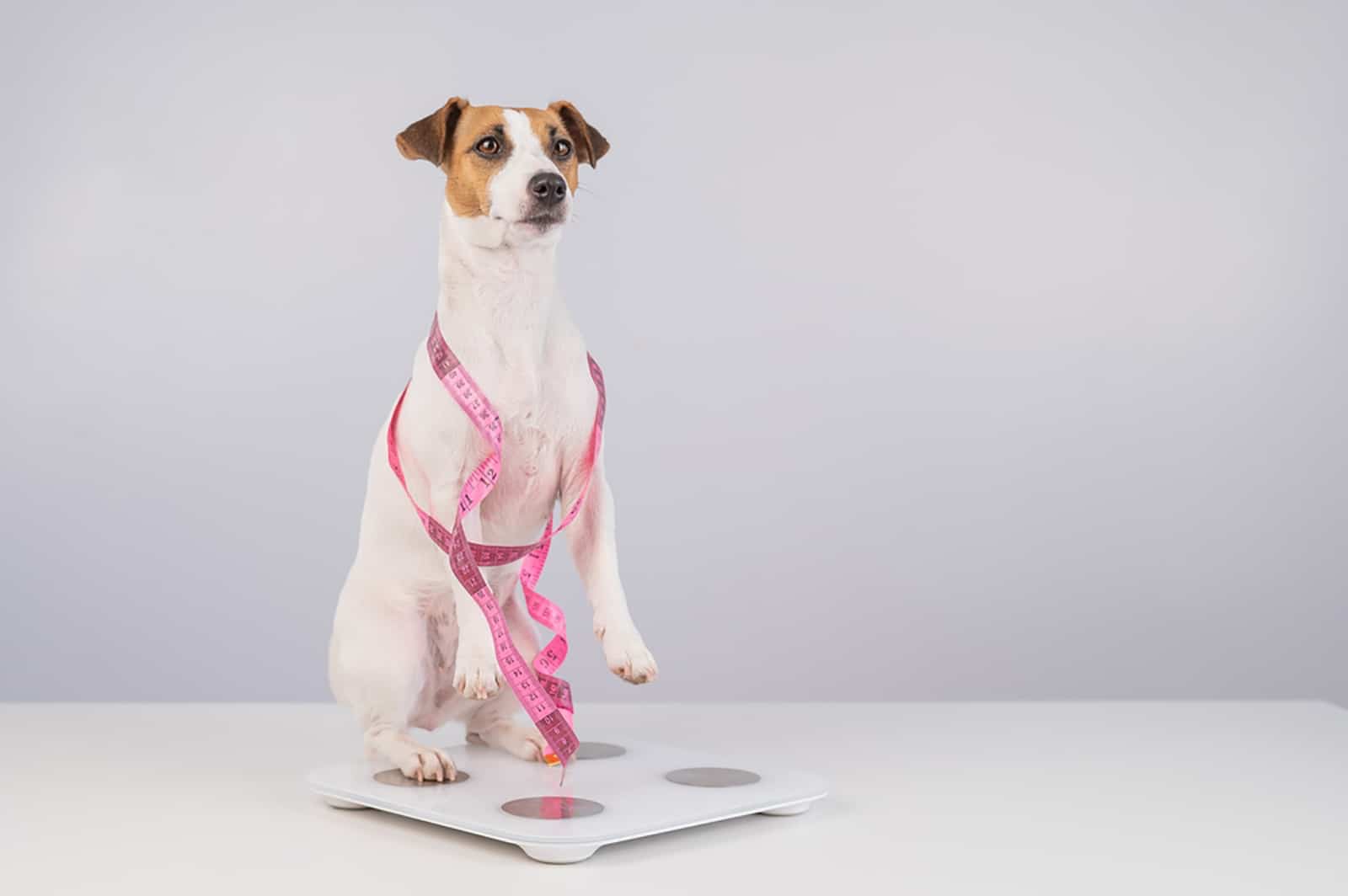
The average Jack Russell Terrier weighs 15-17 pounds. Here I’m talking about the adult phase of your puppy’s life.
This weight goes with the average 10-14 inches in height, which represents a proportional puppy. Any deviation from the regular Jack Russell growth chart can mean a potential imbalance, health issue, or bad feeding habits.
The most important thing is to establish a well-designed feeding routine and stick to it. Jack Russell Terriers are small breed dogs whose weight can be easily exceeded. Unlike large breeds, they demand more frequent and smaller meals.
Conclusion
The Jack Russell growth chart is a sensitive topic that requires time and research. This is a small dog breed that has an active and playful background. The breed itself does qualify among the picky eaters, which means you need a well-prepared feeding chart.
The puppy’s growth should be monitored throughout the phases. This especially refers to puppyhood where you can detect potential growth issues your JRT might face.
Once the growth chart is stabilized, you can be at ease. Jack Russell Terriers are healthy dogs whose growth goes smoothly and without major obstacles!
Read more:
• Pomeranian Growth Chart: How Big Can Pomeranians Get?
• Mini Irish Doodle: A Small Hybrid With A Big Heart
• Shih Poo Growth Chart For The Toy And Standard Size
